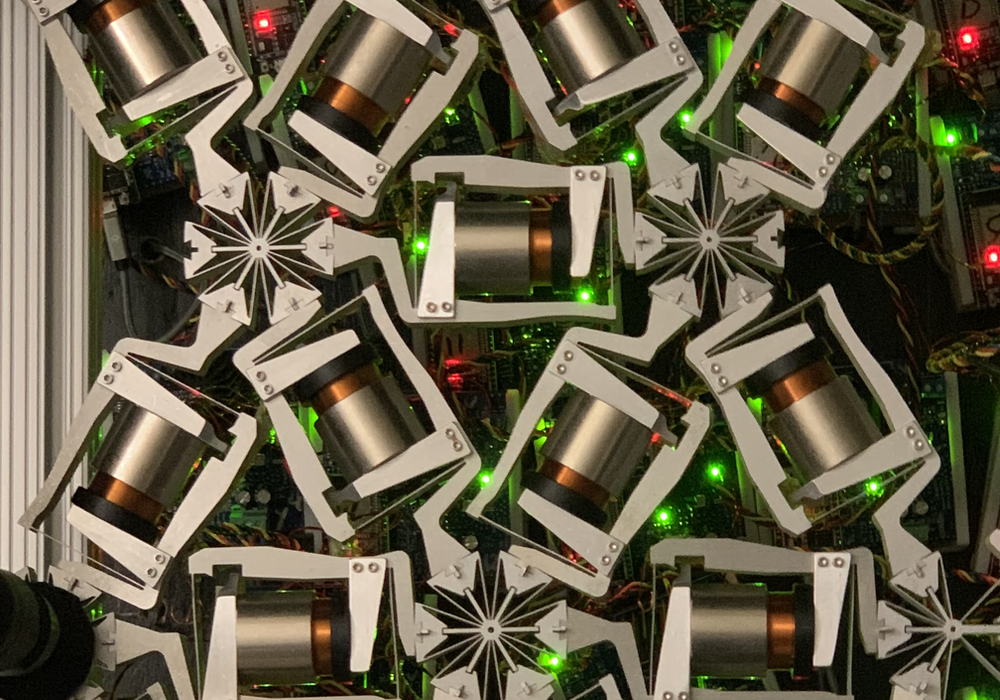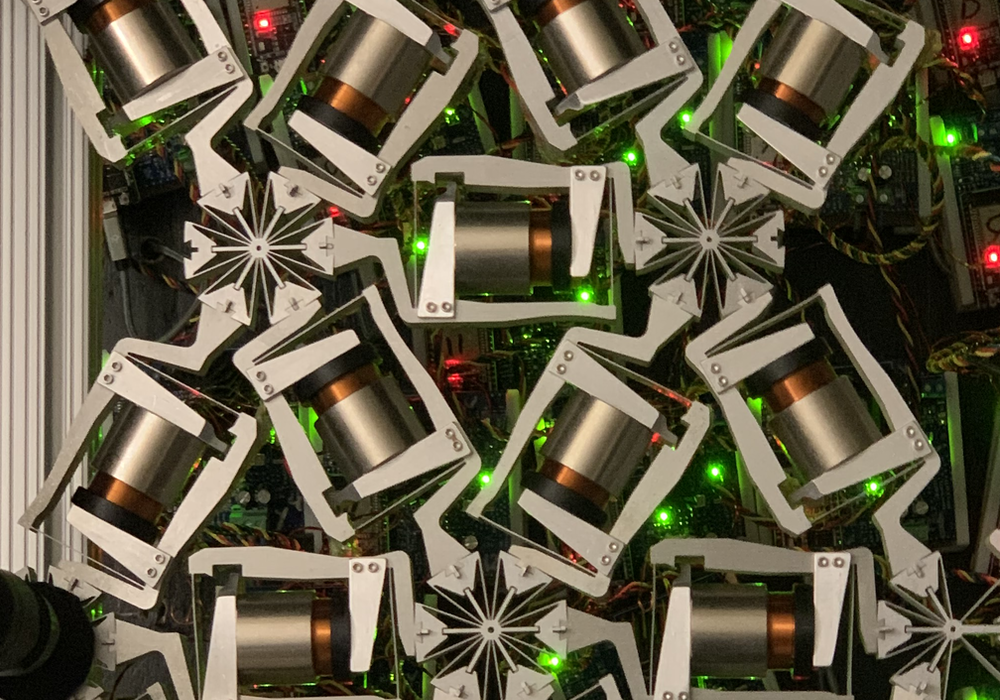Intelligent Materials: Science Fiction to Science Fact
Living entities constantly learn, adapting their behaviors to the environment so that they can thrive regardless of their surroundings. Inanimate materials typically don’t learn, except in science fiction movies. Now a team led by Jonathan Hopkins of the University of California, Los Angeles (UCLA), has demonstrated a so-called architected material that is capable of learning [1]. The material, which is made up of a network of beam-like components, learns to adapt its structure in response to a stimulus so that it can take on a specific shape. The team says that the material could act as a model system for future “intelligent” manufacturing.
The material developed by Hopkins and colleagues is a so-called mechanical neural network (MNN). If produced on a commercial scale, scientists think that these intelligent materials could revolutionize manufacturing in fields from building construction to fashion design. For example, an aircraft wing made from a MNN could learn to morph its shape in response to a change in wind conditions to maintain the aircraft’s flying efficiency; a house made from a MNN could adjust its structure to maintain the building’s integrity during an earthquake; and a shirt weaved from a MNN could alter its pattern so that it fits a person of any size.
For their demonstration, Hopkins and his colleagues created a 2D triangular-lattice MNN about the size of a microwave oven. The system was made up of 21 beam-like components, each of which contained a motor and two force sensors (one at each end of the beam). These sensors transmitted deformation data about each beam to a nearby computer. Those data were fed into an algorithm that computed the local stiffness changes required to ensure the material achieved some set of desired properties or behaviors. This information was then sent back to the algorithm and the process repeated as needed. The MNN was said to have “learned” the property or behavior if, after disconnecting the material from the computer, it could achieve that property or behavior without external guidance; the MNN had stored the learned behavior in its own architecture.
To test the system, Hopkins and colleagues subjected it to a push-like force from above or from the side and then set it to morph to have a specific 2D outline. They showed that the MNN simultaneously learned how to achieve a variety of different shapes and to maintain those shapes under different loads. They also showed that the MNN was able to learn two other behaviors (tilt to the left and tilt to the right) and to perform them in response to varying inputs, indicating that it had a mechanical “muscle memory.”
Ryan Lee of UCLA, one of the study’s participants, says that their demonstration shows the feasibility of creating intelligent materials that take on different shapes when subjected to different kinds of loads. He thinks that such materials could have a wide range of applications. Lee’s favorite example is building a self-healing spacecraft that could alter its structure to fix damage from space debris. “If the spacecraft were made of a MNN material, it would be able to morph…without the need for human interventions,” he says.
Physicist Andrea Liu of Pennsylvania State University agrees that Hopkins, Lee, and their colleagues have demonstrated a system that has the potential to learn. But she notes that the material has a way to go before it can really be called intelligent. The learning step needs to occur independently of a computer, she says. Lee concurs and says that the team is discussing how to install the learning algorithm directly into the sensors. The team is also considering manufacturing smaller components for the MNN and taking it from 2D to 3D. Lee says that such structures could contain many more nodes, enabling the fabrication of MNNs with larger learning and adaptation capacities.
–Anna Napolitano
Anna Napolitano is a freelance science journalist based in London, UK.
References
- R. H. Lee et al., “Mechanical neural networks: Architected materials that learn behaviors,” Sci. Robot. 7 (2022).





